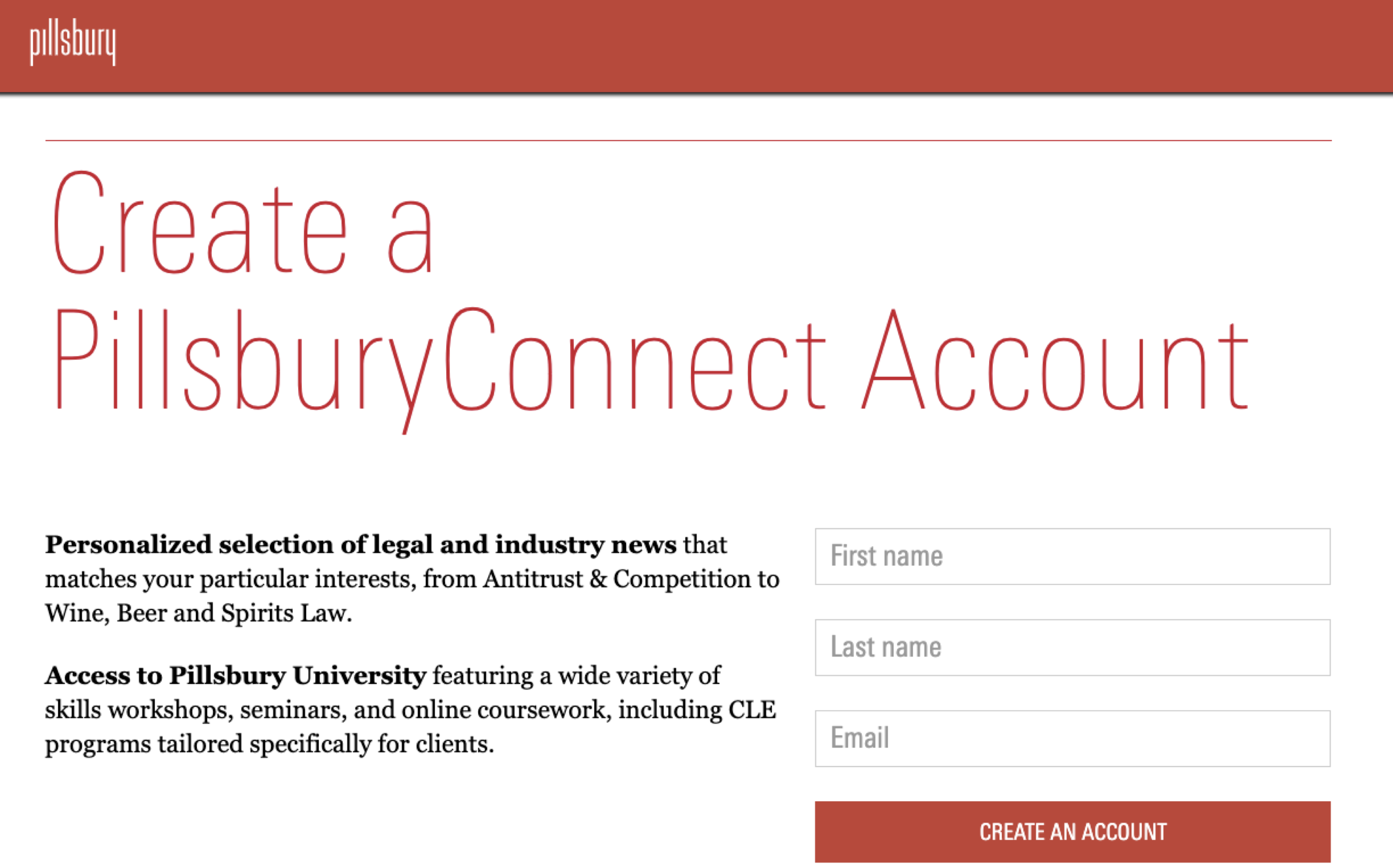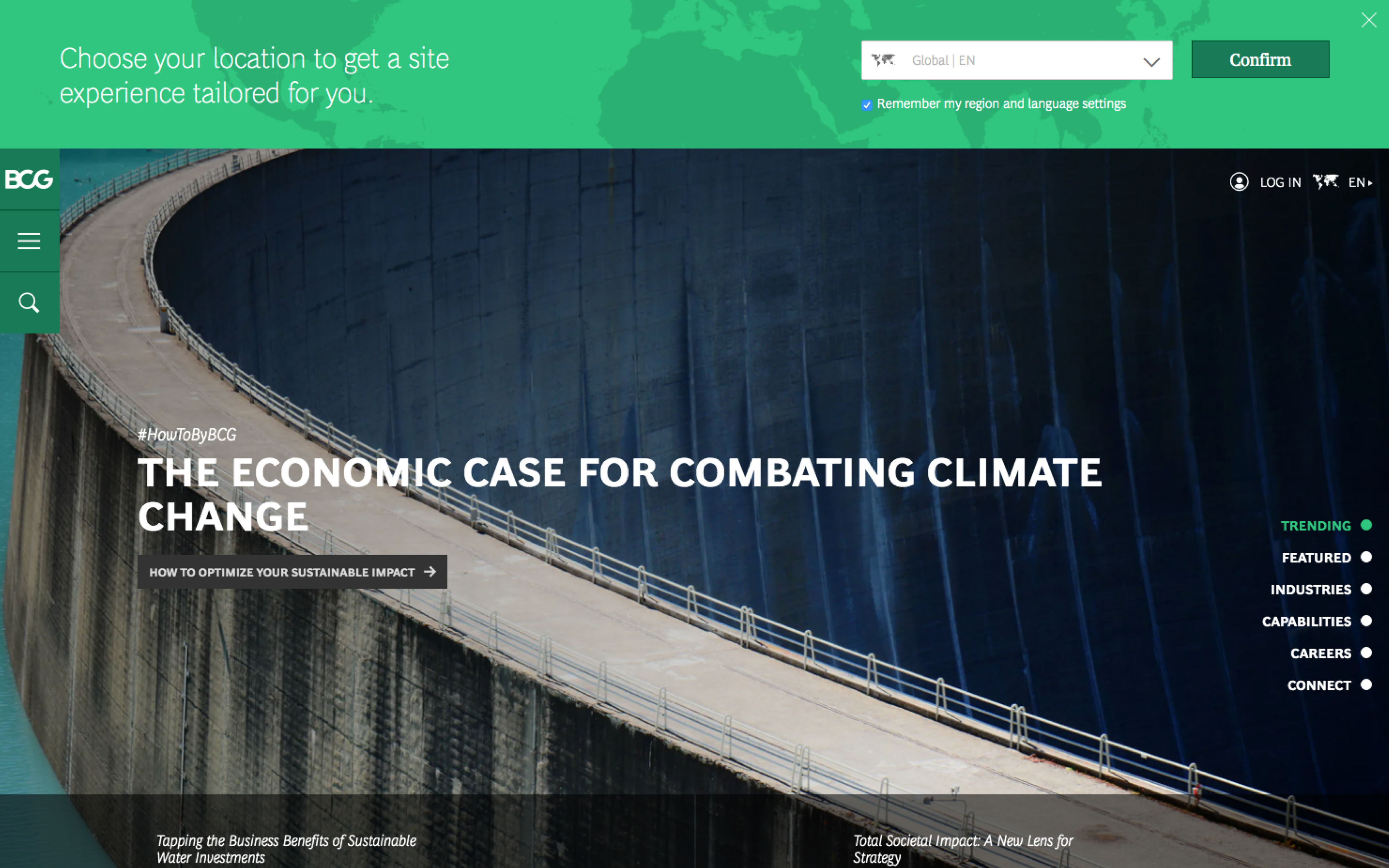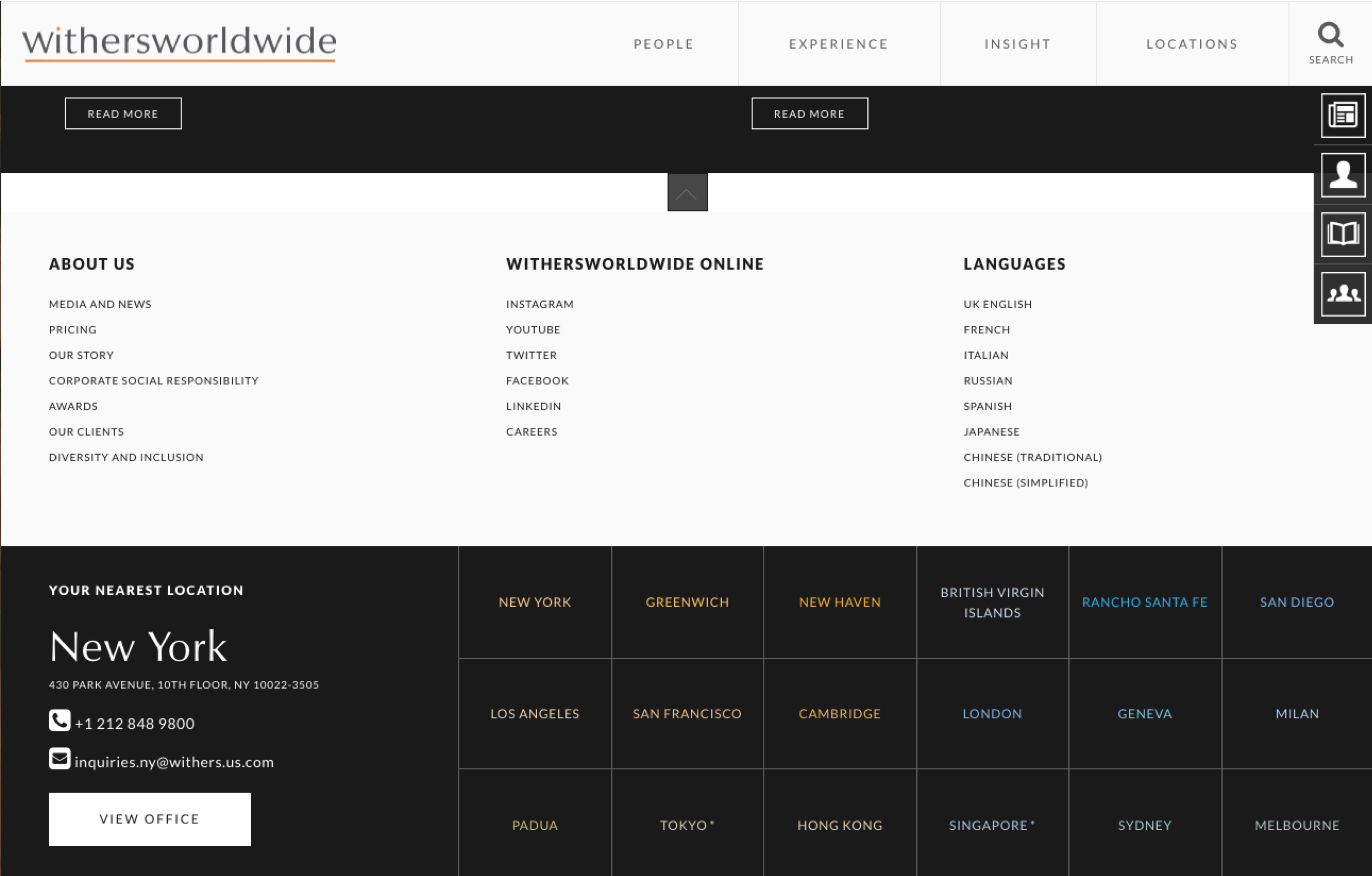5 Ways to Create Memorable Online Brand Experiences - Part 3
Content Personalization
Over the past several years, the rise of specific UI patterns in professional services web design has resulted in a landscape where many sites now look and work in similar ways as each other because users have come to expect certain features and functionality structures to be in place. And since the main goal of any website should be getting the viewer to the content they’re seeking as quickly as possible, there are now some parameters of web design that, while they may be overused, have become essential in a way. Visitors don’t have the patience to figure out how to interact with a site once they get there. If you try to do anything too out-of-the-box or uncommon, you run the risk of creating a frustrating UX because users expect certain content conventions to be in place. So given that reality, what can law firms do to still create memorable website experiences, and how can they do that without sacrificing the expected user experience along the way?
In Part 1 of this five-part series, we explored how firms could use message-driven visuals and a renewed focus on brand positioning to create a more effective and impactful website. Part 2 focused on how firms can utilize videos and micro-animations to stand out in a crowded market. Now in Part 3, we’ll shift tracks from visual tactics to a couple technology focused ones, beginning with a discussion around content personalization and how artificial intelligence has worked its way into the law firm website sphere.
Tactic 3: Content Personalization
Over the past couple years, we’ve seen a substantial increase in the number of law firms that are implementing various automation tools into their websites to personalize content for individual viewers in ways that the majority of firms still aren’t doing. These types of AI-infused platforms promise to gauge your visitors’ intent as they move through content and interact with your site, and then adjust priorities dynamically.
Firms that are doing this are following the path of companies like Amazon and Netflix, in terms of how those sites use search data and previous engagement with content to then proactively suggest other content or products that a viewer is likely to be interested in. For example, everyone is familiar with Netflix’s interface, where they have areas customized to each user account based on a formula of, “Because you watched X, here are 10 other similar programs you may like.” Law firms are combining their CRM systems and email marketing platforms with other automation tools to track data and present personalized content to viewers in a similar way, based on content they’ve engaged with previously. A well-planned content strategy can nurture returning visitors and increase conversions, and the evolution of marketing automation tools can make these interactions far more relevant and successful. By giving your website the power to serve more relevant content to your visitors, you can dramatically improve the way people experience and think about your brand.
There are different ways to structure related content in a website’s database that don’t necessarily require this type of advanced AI, but a more intelligent way for firms to dip their toes into this area is to start by using cookies to track engagement anonymously and then present viewers with other content on the site that they may be interested in based on pages they’ve previously viewed. So when a visitor finishes reading one article, they are immediately presented with other insights on similar topics or by that same author that may pique their interest as well. The goal should be to eliminate any dead-end pages in your website. It’s difficult enough to grab someone’s attention long enough for them to engage with your site in the first place, so once you have it, use all the tools you can to keep those viewers engaged and on your site.

Firms can also produce whitepapers or other educational content and place it behind a subscription form, in order to capture the information of prospective buyers. This is when these automation tools really begin to offer value. Once a visitor signs up to receive your e-alerts or download specific content, marketing automation tools can then track that user by name moving forward and create a record of their subsequent engagement with other firm content as well, both on the site as well as through any other medium that is connected into your automation platform (i.e., email marketing).

Let’s map out a quick example scenario:
A new visitor comes to your website, where cookies on your site track their movements and the content they engage with, and then provide that visitor with other content relevant to meet their interests. The visitor reads a few articles, sees that your firm produces good content on a regular basis, and decides to sign up to receive the firm’s e-alerts for a specific practice area.
Now, that viewer starts receiving those alerts, one of your new articles grabs their attention, and they return to the site to read the article and also click to read the biographies of the two attorneys who co-wrote it. Your marketing automation software is tracking those engagements with the site, and tracking that visitor by name. So you’ll know if the person responded to a particular email, if they came back to the site to read that article, watch that video or explore the website beyond that initial entry point. These software tools can see how many times that person came back to the site, what brought them there and which specific pages they clicked to during each session. And each time they return to the site, the content becomes more and more tailored to their interests based on those previous interactions and the profile that the automation software is forming.
The ability to track users by name, rather than anonymously or by IP address, provides obvious and tangible business development potential as well. Once visitors reached a certain level of engagement, the software can deem them to be a hot prospect, and your firm’s business development team can begin strategizing other ways to engage with them. Perhaps the firm schedules a webinar or in-person event centered around a topic that several prospects have been interested in, and because you’ll know which bio pages these prospects have viewed, you can make sure the right attorneys are in the room for the event.
As an extension of tracking content engagement, location awareness is pervasive in other industries and has become a cornerstone of many consumer website SEO strategies. It’s even worked its way into other professional services industries, but it can be valuable to law firms, too. What if you could automatically present the most geographically relevant expertise, talent and events to a website visitor?

This is something that is just beginning to make its way into the legal industry and represents an opportunity for many law firms, particularly those with multiple offices, to get ahead of their contemporaries to provide a more memorable site experience for their viewers.
UK-based Withers Worldwide, for example, has seamlessly incorporated this type of technology into their website. If someone is viewing your site and you know they’re in New York as they view it, imagine having the ability to automatically push the attorneys or professionals in your New York office, upcoming New York events and/or articles related to New York issues to the forefront of your website. That type of personalization may not even be consciously noticed by the viewer – but what they will notice is that your firm’s site continually presents content that fits their interests.

Check back soon for Part 4 of our series, where we’ll touch on the importance and value of the technology behind your website’s internal site search tool, and how that search tool can be a driving factor in a visitor’s positive or negative experience with your website.
Are you ready to distinguish your firm’s website? Contact Herrmann’s Chief Business Development Officer, John Albert, at john@herrmann.com to set up a free consultation today.


